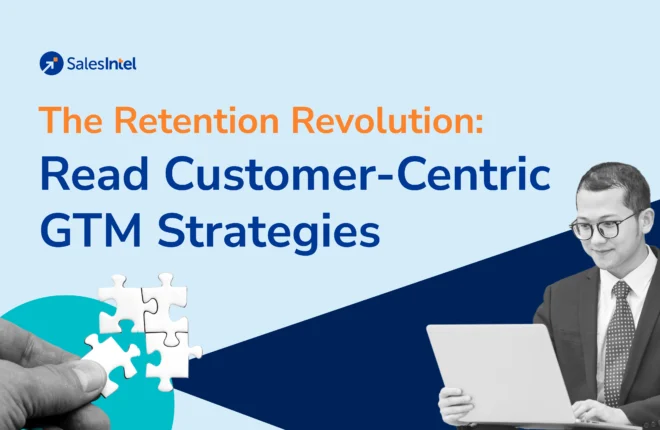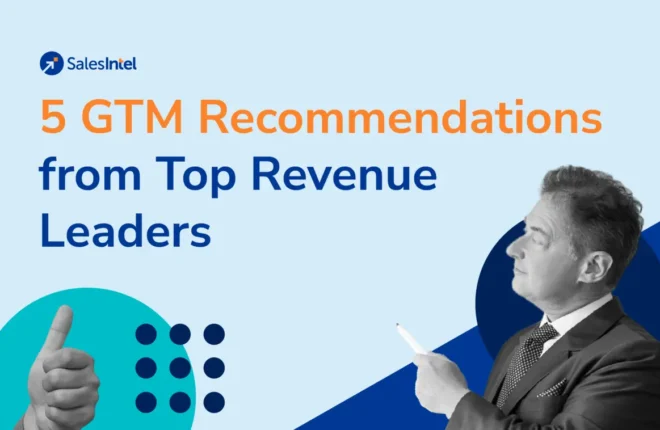The term “prospecting” for potential customers has its roots in the California Gold Rush. Fortune hunters, called forty-niners (named because of the year they barged in), carefully examined rocks and soil, hoping to find precious metals.
Over 170 years later, most San Francisco prospectors rely more on their laptops than shovels. However, their lead generation techniques are still focused on unearthing massive opportunities.
Of course, the majority of their prospecting efforts simply don’t “strike pay dirt”. But if you develop a thorough grasp of the process, lead generation is still one of the most effective ways to unearth valuable, lifelong customers who will fuel your business’s growth.
What Is Sales Prospecting?
Unearthing customers is the foundation of any thriving sales team. Sales reps accomplish this by seeking out and connecting with promising targets (qualified leads) with the aim of transforming them into potential deals and, ultimately, loyal customers.
This customer unearthing typically happens through one-on-one interactions, achieved through outbound efforts. Examples include Sales Development Reps (SDRs) initiating cold calls, crafting personalized emails, or sending InMails on LinkedIn to individuals that align with the company’s Ideal Customer Profile (ICP).
Unearthing customers is a targeted, initial approach that focuses on three key objectives:
- Initiating a dialogue
- Assessing the target’s suitability (qualifying them in or out)
- Presenting your product or service as the answer to their specific challenge
The Importance of Sales Prospecting
A customer acquisition strategy is essential for maximizing the ROI of your efforts and resources. It creates a good relationship between sales and marketing.
Here’s how it works:
- Firstly, it equips sales with a pipeline brimming with high-caliber prospects, empowering marketing to refine their conversion tactics.
- Secondly, the intel gleaned by sales through interacting with the ideal targets on the most suitable channels informs marketing on the themes and content formats that resonate with your perfect audience.
- Thirdly, customer acquisition strategies streamline sales cycles and fuel the creation of impactful marketing campaigns that entice more potential buyers into the B2B marketing funnel.
- High-quality B2B data equips organizations to identify customers predictably, transforming cumbersome processes into efficient, scalable workflows.
The Sales Prospecting Process
Customer unearthing is the foundation upon which sales representatives build successful pipelines. It involves identifying and engaging with promising targets (qualified leads) to initiate the sales journey. This unearthing can take the form of a cold email crafted for someone who aligns with your ideal customer profile, a cold call to a potential buyer within your target market, or a message sent to a qualified lead discovered on LinkedIn.
The core stages of the customer unearthing process encompass the following:
Target Investigation
Meticulously research everything you can about a potential customer. Particularly, you wish to learn how well they align with your offerings and how you can personalize your message to resonate with their needs. In the business-to-business world, this investigation often involves scouring a lead’s LinkedIn page and social media accounts, as well as reviewing information about their company.
Suitability Assessment
Decide if a consumer is worth pursuing and how to prioritize them. Potential buyers are usually ranked by their likelihood of becoming a customer and their potential value to your business. These qualities are evaluated via lead scoring.
Targeted Communication
Craft a personalized message for each prospect, focusing on value over a hard sell. This could involve sending them a helpful resource or informational article relevant to their industry or even offering a complimentary consultation to explore their specific challenges. Contact them via the channel you believe they prefer, whether that’s social media, email, or phone.
Tools and Techniques for Sales Prospecting
In many organizations, customer unearthing forms the cornerstone of the sales process. However, the specific methods employed can vary significantly. Whether you’re crafting a brand new customer unearthing plan or your existing strategy requires a refresh, here are a few actionable tools and techniques to cultivate a successful process.
Craft Your Ideal Customer Profile
Believe it or not, many sales captains fail to chart a course for their ideal clientele. But here’s the shocker:
Your Customer Acquisition Profile (CAP) acts as a compass, guiding you toward prospects most likely to embrace your offering!
Crafting a CAP can begin by pinpointing a prospect’s location, company stature, and financial resources. As you gather intel on potential customers, refine this profile quarterly.
By zeroing in on your Total Acquirable Market (TAM), you’ll effortlessly steer your prospecting efforts toward the most promising targets, saving both time and resources. A well-defined CAP translates to higher-caliber leads and a steeper conversion curve.
Conduct Your Research
Unearthing everything you can about your target audience before initiating contact is a cornerstone of the strategic customer unearthing process. The crown jewel of this research is securing reliable connection details (B2B emails and mobile numbers) to reach key decision-makers within your target organizations.
Sales prospecting tools can empower you to gain a deeper understanding of your prospects. Consider leveraging:
- Company firmographic data: Identify the ideal targets within an organization.
- Technographic insights: Uncover the technology stack they utilize (including competitor solutions or integrations your product complements).
- Buyer signals: Stay on top of sales triggers like new funding rounds or industry announcements to ensure you connect at the opportune moment.
- Purchase intent data: Home in on prospects exhibiting buying behavior, indicating they’re actively considering solutions.
Understand the Company’s Internal Structure
This frequently neglected tactic in B2B customer unearthing holds immense value. To maximize your deal-closing success, forging connections with individuals across various organizational tiers is crucial. Understanding the internal hierarchy, who reports to whom, becomes immensely useful.
Prospecting can begin by engaging with junior and middle management to gain a deeper understanding of the company’s challenges. This intel allows you to tailor your sales pitch strategically when engaging with higher-level decision-makers. While traditionally employed in enterprise sales, this prospecting tactic can be equally effective when targeting SMBs.
Define Your Objectives Prior to Reaching Out
Establishing a clear objective before embarking on your prospecting quest is paramount in the business world. This objective doesn’t always have to be securing a signed contract; it can be as crucial as scheduling a discovery call or setting up a product demonstration.
Take, for instance, reaching out to a completely uninitiated prospect (someone unfamiliar with your company). In this scenario, your primary goal might be to foster a connection. Potential customers crave confidence in the companies they partner with, and trust often blossoms from well-established relationships.
Discover the Pain Points of Customers
During a discovery call, the art of asking insightful questions becomes paramount. Your focus should shift towards gleaning valuable intel about the prospect’s challenges and triumphs. This might involve inquiring about fluctuating metrics and their impact on their team’s performance.
Resist the urge to launch into a product monologue. Instead, employ active listening and strategically connect the dots to showcase your offering as the solution to their specific needs.
Build Your Personal Brand
Today’s buyers navigate the social media landscape with ease, so if you’re absent from these channels, you’re missing out on valuable interactions. But fear not; social media doesn’t replace other B2B prospecting tactics like personal selling or social selling; it complements them beautifully. In fact, a staggering 82% of customers acknowledge researching vendors on platforms like LinkedIn before even responding to outreach efforts.
So, how do you leverage social media for prospecting success? Here’s the roadmap:
- Forge a Compelling Social Media Identity: Cultivate a social media presence that connects deeply with your target audience.
- Spark Conversations Within Your Network: Actively participate in industry discussions, thoughtfully respond to comments, and nurture meaningful connections with your followers.
- Share Valuable Content: Provide insightful industry updates, thought leadership pieces, or even case studies relevant to your ideal customer’s challenges. Consider incorporating content that explores the ever-evolving landscape of payment processing.
For instance, you could share an informative infographic outlining the key considerations for businesses contemplating the leap into e-commerce. Highlight the advantages of creating a payment gateway solution that’s scalable and secure. You elevate your brand awareness and solidify your position as a trusted advisor in the industry by offering such valuable content.
Challenges in Sales Prospecting
Sales prospecting is like sifting for diamonds. It is essential for building a thriving business. However, it isn’t complete without its roadblocks. Here’s what trips up even the most seasoned salespeople:
- Targeting the Right Diamonds: Not just any customer will do. You need to pinpoint those who perfectly align with your offering, have the resources to invest, and hold the decision-making power.
- Reaching the VIPs: Even with the ideal company identified, getting in front of the key decision-makers can feel like cracking a vault. Busy schedules, gatekeepers, and overflowing inboxes make it tough to secure that golden appointment.
- Crafting Messages that Shine: An inbox flooded with generic sales pitches is a recipe for getting ignored. You need to craft personalized messages that sparkle, instantly grabbing attention and addressing the customer’s specific challenges.
- Building Trust at First Glance: Cold outreach can be met with suspicion. Building trust and rapport takes time, but focusing on understanding their needs before diving into your product can lay the groundwork for a strong connection.
- Time Management Mastery: Juggling multiple leads and outreach efforts can eat into your day. Strategic prospecting requires efficiency to maximize your results.
The Future of Sales Prospecting
The future of sales prospecting is full of exciting possibilities. Here’s a peek into what the future might hold for sales prospecting:
The Rise of AI-powered Prospecting
Fancy computer programs (AI) will become super smart, sorting through mountains of info to find the best leads – the ones most likely to purchase your products. This frees up salespeople to chat with these hot leads, closing more deals.
Super-Personalized Messages
Say goodbye to generic emails! Using all this data, salespeople will craft messages that speak directly to each customer’s unique problems and needs. It’ll be like having a personal genie on your computer!
The Video Revolution
Videos are already trending, and they’re only going to get more valuable for prospecting. Imagine short and informative videos that grab attention and show you’re a real person, not just another sales bot. Think of quick introductions or customized messages on video. It can break the ice and build trust with potential customers.
Final Thoughts
Sales prospecting is undoubtedly the foundation of any successful sales team. It’s the first step in building relationships, finding potential customers, and achieving big sales wins. By understanding the core elements and embracing innovative techniques, you can transform your prospecting efforts and turn them into a goldmine of opportunity.




